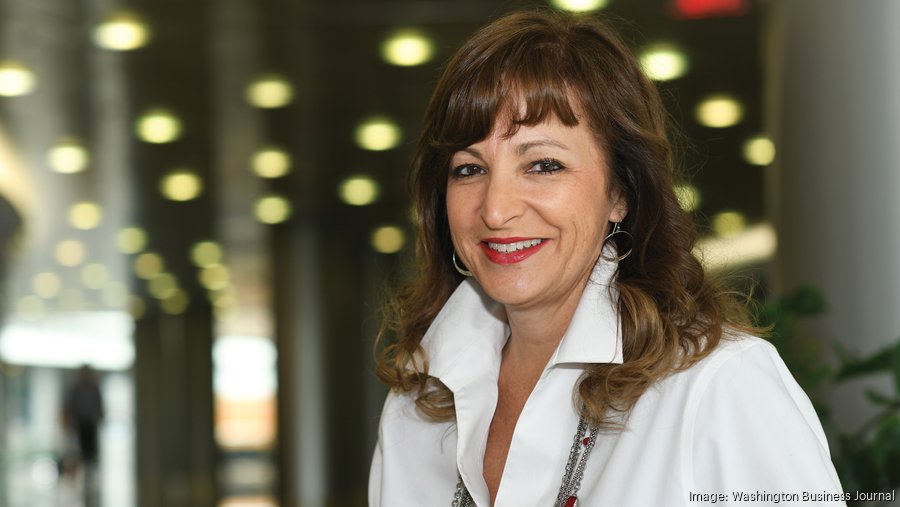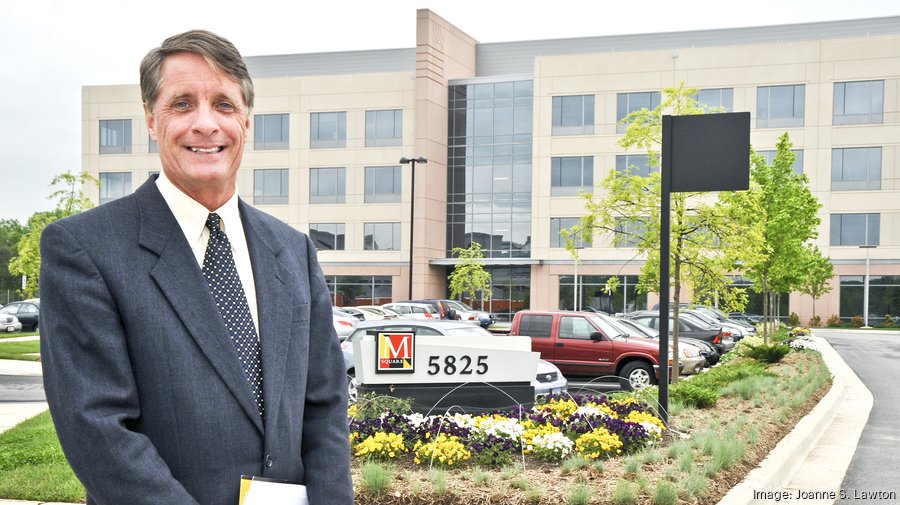In 1976, an Atari engineer named Ron Wayne took a 10% ownership stake in a new technology startup created by a pair of fellow co-workers, meant to serve as the tiebreaker in the ambitious triumvirate.
The enterprise showed early potential, but Wayne became concerned that should the young venture flounder, he would be personally liable for the company’s debts as well. So, he cashed out his 10% stake for $2,300.
The company, Apple Inc., would go on to revolutionize the personal computing industry, as well as helping define the smartphone and tablet computing markets. In his 2011 biography of Apple co-founder Steve Jobs, author Walter Isaacson estimated that Wayne’s 10% stake would be worth roughly $2.6 billion by then, a seminal opportunity in history that just slipped his grasp.
In 2021, Greater Washington faces a similar opportunity, as the chutes of a nascent technology industry — quantum computing, which could revolutionize everything from pharmaceutical development to national security — are sprouting in the region’s fertile ground for innovation.
Much of it is stemming from university research, with University of Maryland sitting at its nucleus locally, as evidenced by the likes of College Park-based IonQ Inc. and others that have spun out of UMd. But fueling quantum computing and quantum information science will require more than just fancy hardware. It also calls for software applications, cybersecurity programs, university talent and the highly prized workforce dotting the region that can put it all together.
“One of my favorite [sayings] is egos kill ecosystems,” said Julie Lenzer, chief innovation officer at the University of Maryland. “I think one of our challenges is going to be to make sure we break down our regional divide and making sure we are working together as a region, that innovation doesn’t stop at the border. That’s the kind of thing Silicon Valley didn’t have to contend with — it was all in one jurisdiction.”
If the D.C. area can summon the whole of its parts — from the federal, state and local governments to colleges, universities and the private sector — to help build the industry from the ground up, it could reap the economic whirlwind of a once-in-a-generation technology. But without those pieces acting in concert, the region could fall behind in a race that is being currently competed not only nationally, but also globally.
“This is a worldwide space race, not unlike the space race of the past,” said University of Maryland President Darryll Pines. “And there will be winners and losers. It’s really an opportunity for our region to become truly one of the epicenters of quantum. It’s just a matter of the proper investment, the proper policies and engaging the appropriate communities and the talent pool to make it successful.”

The private sector
For Robert Liscouski, the rise of quantum starts with the user sitting in front of a computer screen.
Liscouski, a former assistant secretary for infrastructure protection at the Department of Homeland Security and director of information assurance for The Coca-Cola Co., had co-founded Quantum Computing Inc. in 2018, now serving as its president, CEO and chairman. The Leesburg company crafts software that allows users to run advanced computational problems on a quantum computer through the cloud, via its Amazon Web Services partnership.
Liscouski said the region’s growing interest in quantum technology mirrors the rise of its internet industry in the 1990s, when government-backed research quickly led to the commercialization of new tech that spawned companies like AOL.
“You had software developers and government contractors rushing to meet that demand” from government, Liscouski said. “It spurred not just job development and job growth, but it significantly impacted the shift of the industry to internet-based technologies.”
This time, security fears are spurring demand. Today, a quantum computer that can crack all manners of cybersecurity has yet to exist — a major source of concern for the National Institute of Standards and Technology (NIST). Yet in Bethesda, one company is already offering technology to transmit quantum-encrypted data.
Quantum Xchange, one of Fast Company’s most innovative companies in 2020, closed $13.5 million in Series A funding in January, and $23.5 million in all, to develop dark fiber quantum networks between D.C. and Boston. Its early tech transmits encrypted keys using photons, making it insusceptible to traditional hacking, and is called quantum key distribution. That work led to a pilot program with partners Toshiba Corp. and Verizon Communications Inc. for tech that provides various quantum-resistant encryption algorithms across telecom networks — and now generates revenue for Quantum Xchange.
“It’s not like Y2K, which was a moment in time,” Quantum Xchange CEO Eddy Zervigon said of potential hacks of encrypted data. “This is happening today. Because right now, you talk to anybody in the intelligence community, and there’s a widespread belief that nation-state actors are tapping, harvesting any and every line of any consequence that they can get their hands on. So, any fiber-optic line running through New York City is probably being tapped.”
Then there’s IonQ, perhaps the region’s most advanced private sector player. It’s in the midst of a merger deal with special purpose acquisition company dMY Technology Group Inc. III to go public on the New York Stock Exchange at a projected $2 billion valuation. Already, it’s hauled in $84 million in total venture as of July.
“It’s great to give money to the universities,” said Peter Chapman, president and CEO of IonQ Inc. “But often it’s the private companies that can do the most with that money and run the fastest.”
To replicate their success, Liscouski said state and local government officials must also step up to support businesses that could take root in the D.C. region. David Iannucci, president and CEO of the Prince George’s County Economic Development Corp., in the bull’s-eye of the potential quantum information science economy, couldn’t agree more. He said he asks himself this question: “What was the head of economic development doing in Seattle when Bill Gates walked into his office 40 years ago and said, ‘I’ve got this idea for this software development company.’”
That, he said, means providing more capital and other aid, such as the Maryland Regional Institutional Strategic Enterprise (RISE) Zone program’s financial incentives — perhaps lease assistance — to attract businesses to certain areas.
Those programs, he said, are “much less risk to the county, to the state, to the university and to the benefit of the business.”

Higher education
The University of Maryland planted a flag with its Quantum Startup Foundry, founded in April with an initial $25 million investment to support new businesses focused on the fast-growing quantum information science niche. In all, the university has five collaborative quantum research centers and more than 200 quantum scientists and engineers working on everything from quantum computing to sensing.
“I call it Qubit Alley,” Julie Lenzer said of the region.
Lenzer, who led the Department of Commerce’s Office of Innovation and Entrepreneurship during the Obama administration, came to UMd. to serve as its chief innovation officer in December 2016. She was tasked with helping nurture the nascent field here, one that’s already fed $112.7 million in research awards to the university in the last five years.
“We really started digging into what are the unique needs of these quantum startups,” she said. “There’s lots of programs to help you with your business models and your investor pitch, but what’s unique about quantum and what could we bring, of our regional resources, to bear to help drive more quantum startups?”
Lenzer said that because quantum technology has the potential to be so broadly disruptive across society, it’s difficult for investors, private and public, to nail down a unique business value proposition just yet. That, she said, is what the Quantum Startup Foundry is trying to solve.
Though, the Foundry is only one slice of a newly formed Mid-Atlantic Quantum Alliance, now up to 24 members that include UMd., Virginia Tech and George Mason, Georgetown, Johns Hopkins and Bowie State universities. Its member companies bear such names as IBM Corp., Lockheed Martin Corp., Northrop Grumman Corp., Booz Allen Hamilton Inc. and Amazon Web Services, working alongside NIST and others. Launched in January 2020, the alliance aims to accelerate quantum development through collaboration and diverse leadership to help drive innovation in the field.
“That’s a great anchor for us because it’s lots of talent from those institutions, lots of great scholars in quantum science and technology,” Pines said. “Then wrapping it around with potential partners in industry who want to translate and commercialize the technologies that come out of our laboratory is the second step. Then, finally, the government partners, which have some of the unique facilities — I mean, quantum physics and quantum science is very expensive to do. That’s why it’s not an easy access to entry for just the average industry partner or the average academic partner.”
Some of their work centers on building a talent pipeline that, leaders recognize, must be diverse. In September, Howard University became the lead school in the IBM-HBCU Quantum Center, a network of historically Black colleges and universities that can access the company’s collection of quantum computers and a “multiyear $100 million investment in technology, assets, resources and skills development through partnerships” to help build a robust, inclusive quantum workforce. Howard declined to specify its monetary share of that network.
The center began with 13 member institutions, but quickly added another 10 in February, including Bowie State, Coppin State, Delaware State and Morgan State universities, as well as the University of the District of Columbia in the vicinity.
“Having those types of connections, not only for myself, but for our students and faculty is just critical,” said Howard Associate Professor Thomas Searles, who serves as the IBM-HBCU Quantum Center’s director. “With respect to quantum, there are a lot of things that may or may not be oversold at this point, but really the advantage is that science and technology will provide jobs and opportunities and ways to learn that I think we haven’t seen in a very long time.”
Howard is also pursuing a plethora of initiatives with federal research laboratories around quantum information science, including work with the Office of Naval Research around quantum communications and a research partnership with Brookhaven National Laboratory in Upton, New York, to help achieve quantum supremacy through its Co-design Center for Quantum Advantage.
The D.C. region’s access to research laboratories of the armed services, as well as resources provided through the IBM-HBCU Quantum Center, offers an extreme advantage here over other markets.
“Our hope is that D.C. can be a hub, leveraging the government laboratories, the universities in the area and really the government contractors in the area, places like Northrop Grumman and Lockheed,” Searles said. “The other big advantage too that I can not downplay at all is we do a lot of work with NIST.”

The federal government
For the field to surge here, a major investor needs to be in its favor: the federal government. That is often where the funding spigot starts.
There’s no greater evidence than the $1 billion-plus allotted to quantum information science grants last year by the White House Office of Technology Policy, National Science Foundation and Department of Energy. As of January, the Trump administration’s budget proposal had planned a 58% surge in quantum research funding from $450 million in fiscal 2019 to $710 million in fiscal 2021,
Before that, last August, the administration designated five of the Department of Energy’s National Research Laboratories as Quantum Information Science Research Centers: Argonne National Laboratory in Argonne, Illinois; Brookhaven National Laboratory in Upton, New York; Fermi National Accelerator Laboratory in Batavia, Illinois; Oak Ridge National Laboratory in Oak Ridge, Tennessee; and Lawrence Berkeley National Laboratory in Berkeley, California. More importantly, it provided $625 million in research grants over the next five years for those activities.
Each research center tackles a specific quantum tech issue. They carry research partnerships with several universities, including Howard and UMd., but geography can still play a role in which regions may fuel the quantum computing industrial base — and so far, that’s creating a well-heeled quantum hub nearly 700 miles west of here.
Illinois houses two bustling QIS centers, in Argonne and Fermi. Combine that with a $100 million donation from the Pritzker Foundation to the University of Chicago in 2019 to establish a School of Molecular Engineering, with at least a partial focus in quantum engineering, and Chicago is turning into a healthy bedrock for a quantum tech economy.
The D.C. region doesn’t have a QIS Research Center. But what it does have is one of the nation’s biggest patrons of the technology, the Department of Defense.
Supporters paint a picture of corporate quantum players, such as Google, IBM and Amazon.com Inc., linking up with DOD labs like Army Adelphi Laboratory Center in Adelphi, Maryland; the Naval Research Laboratory in D.C. and Defense Advanced Research Projects Agency in Arlington to provide a significant quantum research footprint.
Defense officials have an incentive for their elevated interest, as near-peer adversaries Russia and China have increased their research investments in quantum technology. According to a 2019 report from the Congressional Research Service, China is investing $244 million a year on QIS research, is actively recruiting QIS pioneers and has made some strides in early quantum satellite and telecom advancements.
Add to that: The feds are eyeing unprecedented cybersecurity implications. Today’s most commonly used data encryption is based on complex algorithms — encrypted data is disarranged so it’s unreadable without a cryptographic key to unlock the algorithm. Generally, high-end computing power can eventually solve that algorithm, but often, it’s too time-consuming to be worthwhile. However, with a powerful enough quantum computer, cryptographic systems could theoretically be unlocked in a fraction of the time — on any computer, in any industry.
It’s caused NIST to start evaluating quantum-resistant cryptographic algorithms, with new draft standards expected by 2024.
Indeed, NIST has been a key collaborator and funder of quantum research for UMd., said Brian Darmody, CEO of the Association of University Research Parks and a former UMd. executive. “This is a good example of federal investment outside the gates of a federal lab that helped develop the University of Maryland’s expertise in quantum.”





